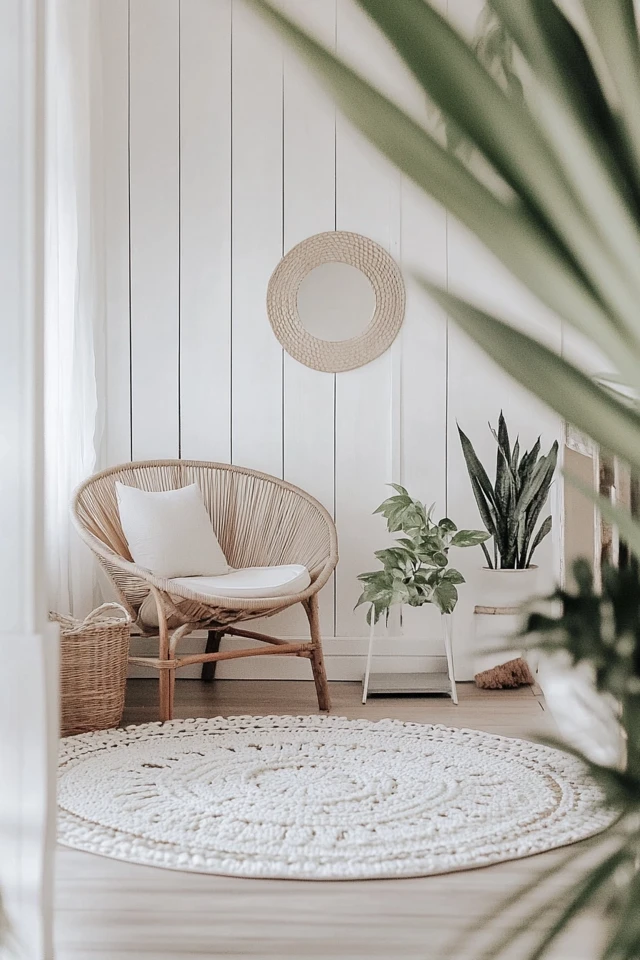Introduction
Mid-century modern and minimalist styles might seem like two sides of the same coin—both embrace clean lines, functionality, and a less-is-more philosophy. However, when blending these styles, it’s important to strike the perfect balance between the retro warmth of mid-century modern and the serene simplicity of minimalism.
When I attempted this mix in my living room, I faced the challenge of honoring the vibrant character of mid-century pieces without disrupting the calm and uncluttered vibe of minimalism. After a lot of trial and error, I discovered that thoughtful curation, a balanced color palette, and strategic use of texture were the keys to success.
This guide will show you how to seamlessly combine these two iconic styles, creating a home that feels timeless, stylish, and effortlessly cohesive.
Why Combine Mid-Century Modern and Minimalist Styles?
Key Benefits
- Timeless Appeal: Both styles are rooted in simplicity and functionality, making them enduringly stylish.
- Balanced Aesthetic: Mid-century modern adds warmth and personality, while minimalism keeps things serene and clutter-free.
- Versatile Design: The blend works well in spaces of any size, from small apartments to large open layouts.
- Focus on Quality: Both styles prioritize high-quality materials and craftsmanship.
1. Start With a Neutral Base
Why It Works
Minimalism thrives on neutral tones, which provide the perfect backdrop for mid-century modern furniture and decor.
How to Style It
- Paint walls in soft neutrals like white, beige, or light gray to create a calm foundation.
- Choose flooring in natural tones, like light wood or polished concrete.
- Add rugs in muted colors or subtle patterns to ground the space without overwhelming it.
- Keep window treatments simple with sheer or solid-colored fabrics.
2. Incorporate Mid-Century Modern Furniture
Why It Works
Iconic mid-century furniture adds warmth, character, and sculptural interest to a minimalist space.
How to Style It
- Opt for pieces with clean lines and organic shapes, like the Eames Lounge Chair or a walnut sideboard.
- Choose neutral or earth-tone upholstery for sofas and chairs to maintain cohesion.
- Pair mid-century modern furniture with minimalist staples, like low-profile beds or slim dining tables.
- Limit the number of furniture pieces to avoid visual clutter.
3. Stick to a Streamlined Color Palette
Why It Works
A cohesive color palette ties the two styles together and creates a serene atmosphere.
How to Style It
- Combine warm wood tones (walnut, teak) with soft neutrals (white, beige, gray).
- Use accent colors sparingly—retro hues like mustard yellow, olive green, or burnt orange add a subtle mid-century touch.
- Keep patterns minimal; focus on solid colors or simple geometric designs.
- Repeat colors throughout the space for a harmonious look.
4. Choose Functional, Statement Lighting
Why It Works
Lighting plays a dual role in this blend—providing function while serving as a design element.
How to Style It
- Use mid-century modern lighting, like Sputnik chandeliers or globe pendants, as sculptural focal points.
- Pair minimalist floor lamps with slim silhouettes alongside mid-century furniture.
- Opt for metallic finishes like brass, black, or matte white for versatility.
- Use lighting strategically to highlight key areas, like seating arrangements or artwork.
5. Focus on Quality Over Quantity
Why It Works
Both mid-century modern and minimalist styles value craftsmanship and thoughtful design.
How to Style It
- Invest in a few high-quality pieces instead of filling the room with unnecessary items.
- Prioritize natural materials like wood, leather, and wool for furniture and decor.
- Avoid trends or mass-produced items that don’t align with the timeless aesthetic of these styles.
6. Add Mid-Century Accents Thoughtfully
Why It Works
Accents like decor and artwork bring a retro charm to minimalist spaces without cluttering them.
How to Style It
- Use abstract art or vintage posters in simple frames to add personality to walls.
- Incorporate sculptural vases, bowls, or planters with organic shapes.
- Display one or two iconic mid-century pieces, like a starburst clock or retro ceramics, as focal points.
- Limit decor to a few well-placed items to maintain a minimalist vibe.
7. Embrace Open Space
Why It Works
Minimalism thrives on openness, and mid-century modern furniture’s sleek designs make it easy to maintain.
How to Style It
- Arrange furniture with ample negative space around each piece.
- Avoid overcrowding surfaces—limit side tables and shelves to a few functional or decorative items.
- Use open shelving to display a curated collection of books or decor.
- Incorporate multi-functional furniture, like a storage bench or nesting tables, to maximize space.
8. Layer Textures for Depth
Why It Works
Layering textures adds warmth and interest to minimalist spaces, while staying true to mid-century modern’s love for natural materials.
How to Style It
- Use soft textiles, like boucle or wool, for cushions and throws.
- Incorporate jute or sisal rugs for an organic touch.
- Pair smooth leather or velvet upholstery with wooden furniture.
- Add subtle contrast with matte and glossy finishes in decor and furniture.
9. Highlight Mid-Century Materials
Why It Works
Mid-century modern materials like wood, metal, and glass enhance the minimalist aesthetic.
How to Style It
- Use walnut or teak furniture to bring warmth and texture to the room.
- Incorporate metallic accents, like brass light fixtures or chrome table legs.
- Add glass elements, like a coffee table or pendant lights, to keep the space feeling light and airy.
- Avoid overly ornate details to maintain clean lines.
10. Keep the Space Clutter-Free
Why It Works
Minimalism’s “less is more” philosophy ensures your space remains serene and visually cohesive.
How to Style It
- Use hidden storage, like cabinets or baskets, to keep everyday items out of sight.
- Edit your decor regularly, keeping only the pieces that add value or meaning to your space.
- Use furniture with built-in storage, like a mid-century credenza or an ottoman with a lid.
- Stick to one or two focal points in each room to avoid visual clutter.
Picture Gallery
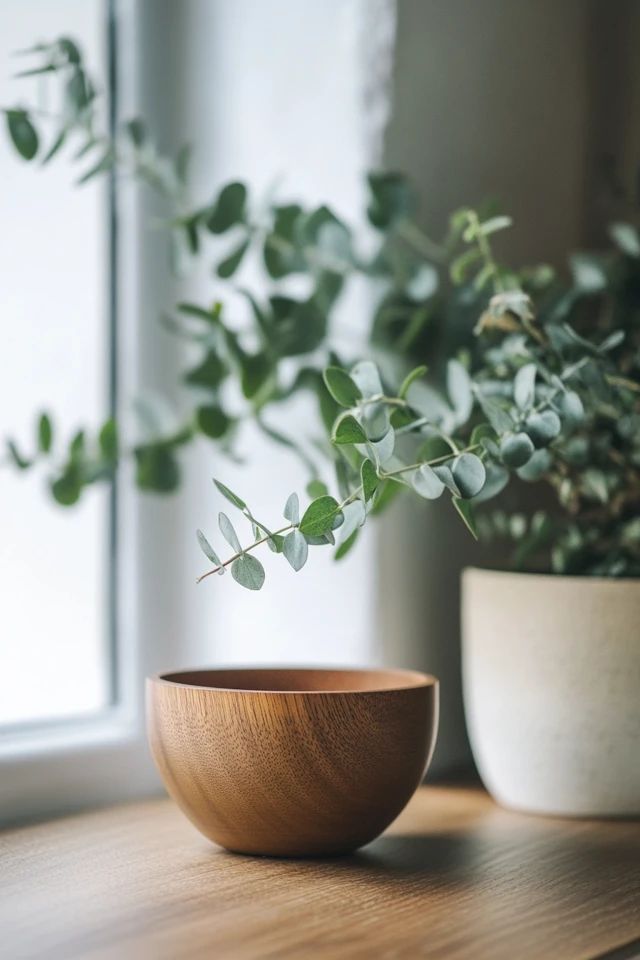
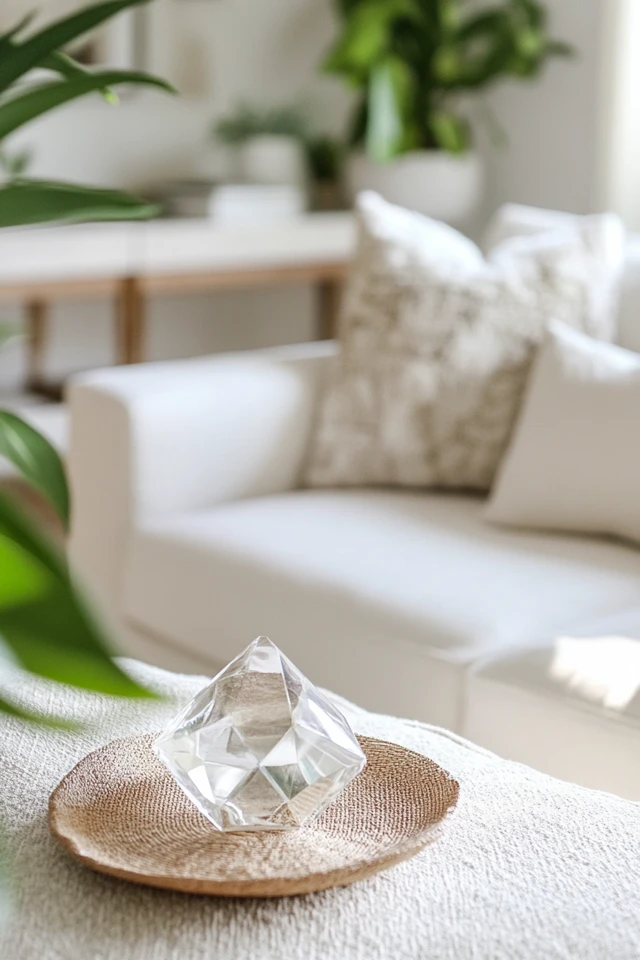
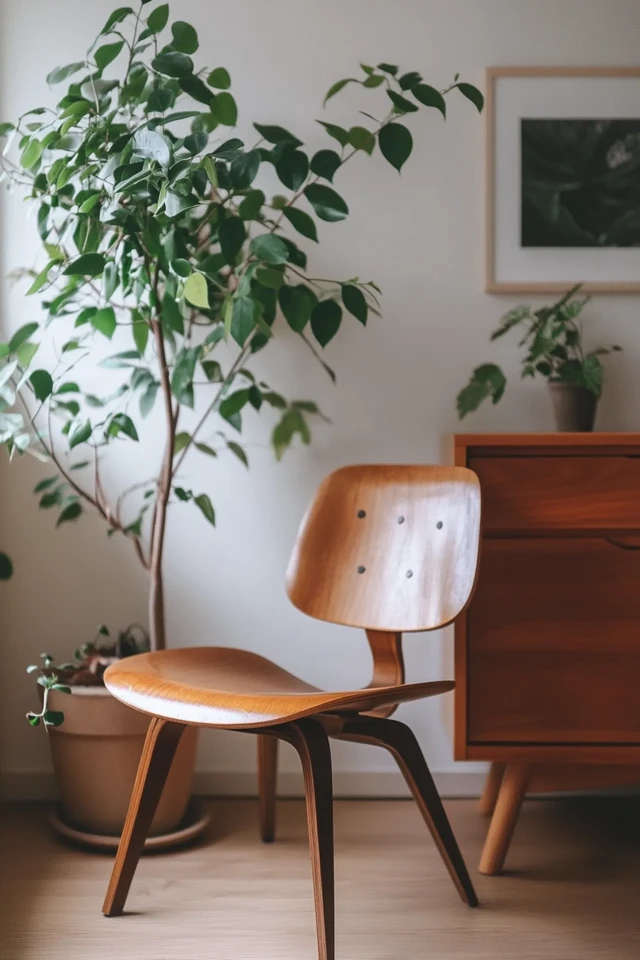
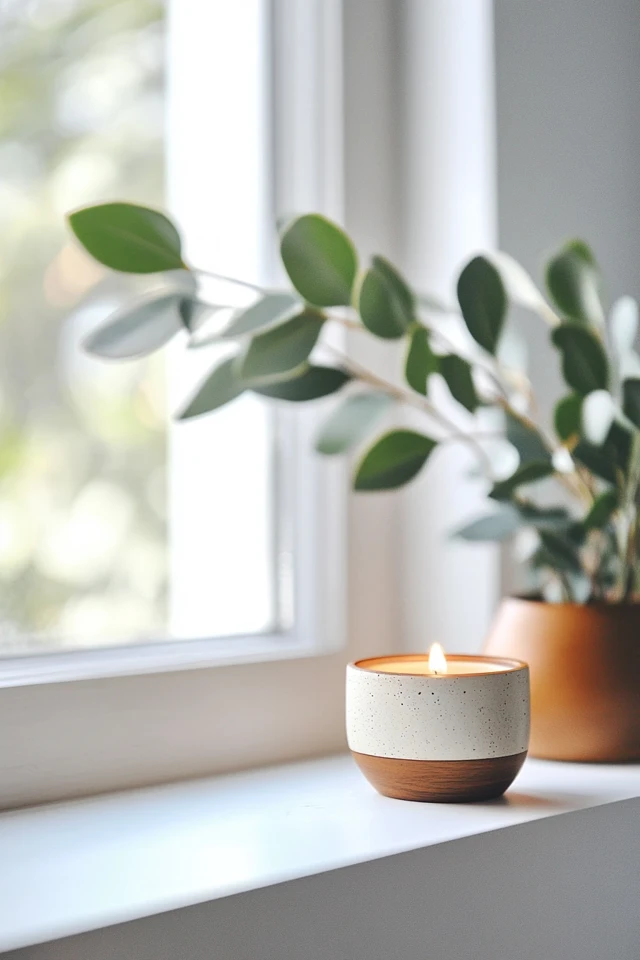

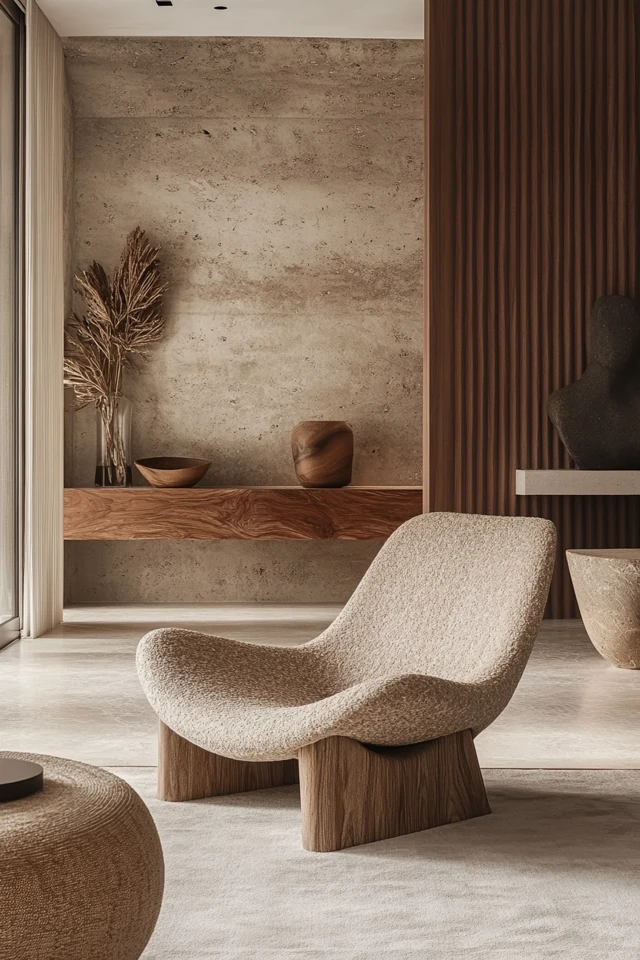
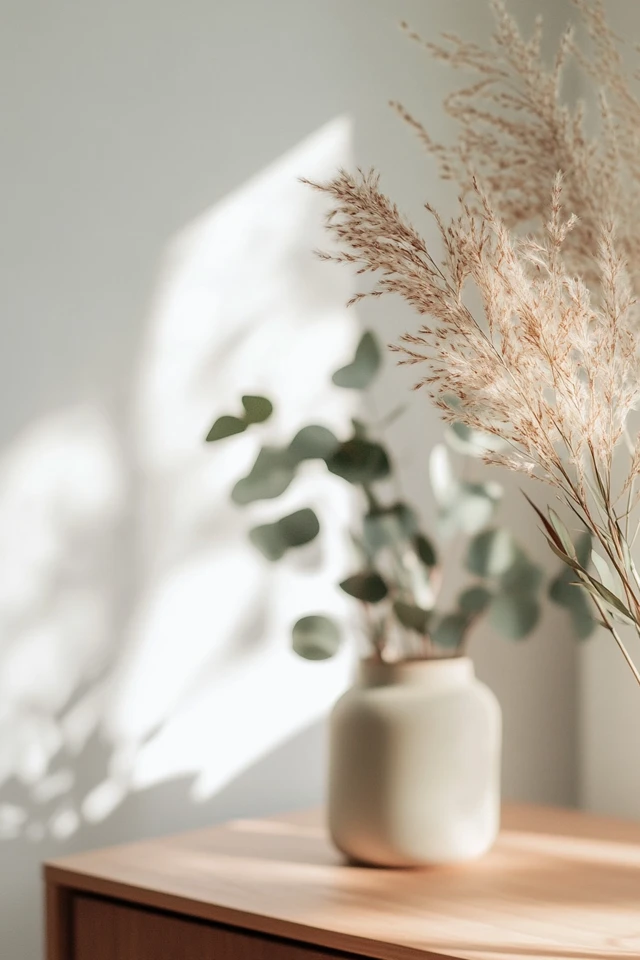
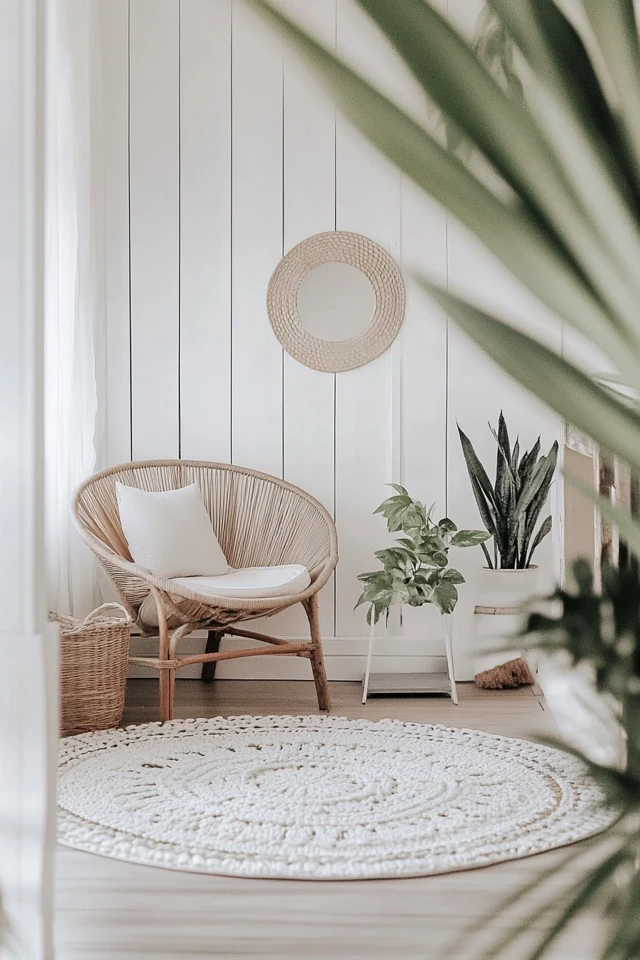
Conclusion
Blending mid-century modern and minimalist styles allows you to create a home that feels both warm and serene, retro yet timeless. By focusing on clean lines, quality materials, and a curated aesthetic, you can achieve a space that’s as functional as it is beautiful.
What I love most about this combination is its versatility—it works for any room size, budget, or personal style. Whether you’re starting fresh or refining an existing space, these tips will help you strike the perfect balance between mid-century charm and minimalist simplicity.
So embrace the “less is more” mantra, invest in timeless pieces, and watch your home transform into a sanctuary of style and tranquility.
FAQ
Can I mix mid-century modern and minimalist styles in a small space?
Absolutely! Both styles prioritize functionality and open space, making them ideal for small rooms.
What colors work best when blending these styles?
Stick to neutral tones like white, beige, and gray, with warm wood tones and occasional pops of retro colors like mustard yellow or teal.
How do I avoid making the space feel too stark or cold?
Incorporate textures like wool, boucle, or leather, and use warm wood tones to add coziness and depth.
Can I use bold patterns in this blend?
Yes, but keep patterns minimal and geometric. Use them sparingly in accents like rugs or throw pillows.
Where can I find furniture that suits both styles?
Retailers like West Elm, Article, and Joybird offer furniture that blends mid-century modern and minimalist aesthetics seamlessly.

